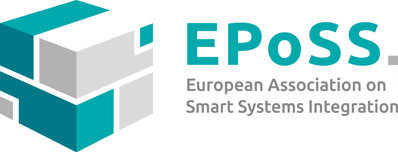
On the Photonics Partnership Annual Meeting 2023 in Brussels on 26th and 27th of April a white paper on Integrated Photonics has been published and was presented to the European Commission jointly by EPoSS and Photonics21 pointing out trends, needs and R&D&I priorities.
Integrated Photonics is one of the key enabling technologies of our time, with a wide range of applications in established and emerging markets dependent on it. These range from high-performance computing to industrial sensing to extended reality systems. The importance of integrated photonic solutions is recognised by The European Chips Act, which will accelerate investment in semiconductor chips, including in photonic integrated circuits (PICs).
Reflecting the timely importance of this technology for Europe, a 'white paper' on Integrated Photonics has been published jointly by the European Technology Platform Photonics21 and the European Association on Smart Systems Integration (EPoSS). This was in response to a 2022 request from the European Commission, seeking input ahead of the €43 billion Chips Act initiative.
The joint focus group featured a mixture of experts from both Photonics21 and EPoSS, maintaining a balance of representatives from research and industry, from different European member states, and from different technological backgrounds. Chaired by Michael J. Wale and Michael Scholles, the group worked together across five workshops in late 2022 to author the white paper.
The paper first considers the present needs of industry and society in Europe as its backdrop. It then reviews current trends in R&D&I of integrated photonics, considering various key future markets individually, followed by a SWOT of Europe's current standing in the field. It concludes by identifying four key R&D&I priorities and offering programming recommendations based on these.
The expert group has identified the following research, innovation and industrialization priorities for further strengthening Europe’s position:
- Establish R&D ecosystems for joint development of electronic components and systems and photonics, since photonics, electronics and related system design need to be interconnected in order to build industrially attractive solutions at an acceptable price point.
- Cost-efficient possibilities for prototyping including seamless access to services for SMEs. There are EU based pure play PIC foundries with volume capability but the task of bringing the ecosystem to the required manufacturing readiness level across a range of technologies is far from complete.
- Ensure linking up of entire value chain: This includes the all aspects like materials, design systems, front-endwafer fabrication, back-end test, assembly and packaging.
- Education activities to have enough skilled persons for the photonics industry.
Program and Funding recommendations are proposed to address those issues at a European level by joint R&D&I projects.
Share on
